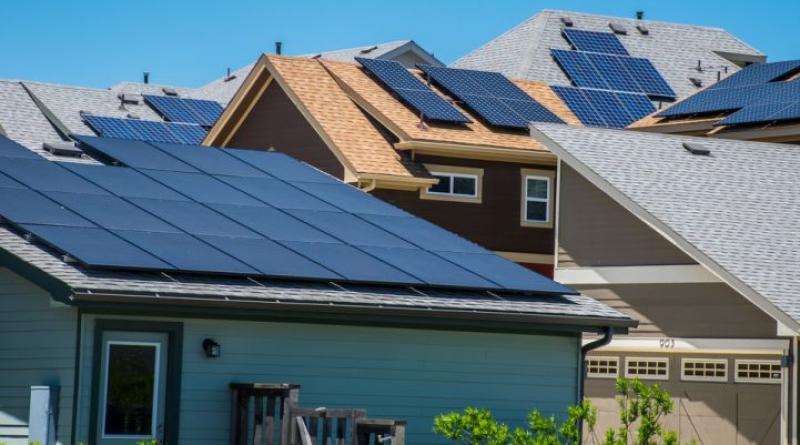10 Solar and Storage Trends for 2021.

California solar veteran Barry Cinnamon is looking forward to more solar and storage — and less COVID-19 — in 2021.
Dave Barry said it best when summarizing 2020: “This was a year of nonstop awfulness, a year when we kept saying it couldn’t possibly get worse, and it always did. This was a year in which our only moments of genuine, unadulterated happiness were when we were able to buy toilet paper.“
Luckily for many companies in the solar and storage industry, our products and services were in high demand; from a revenue perspective, 2020 was not as bad as it could have been. As businesses and employees consider the long-term benefits of continued at-home working, the demand for inexpensive and reliable behind-the-meter energy supplies is likely to be even higher in 2021. And a favorable political environment will help. So here are my predictions for solar and storage for 2021.
- All roof orientations are fair game for solar. Module efficiency has increased from about 13 percent to over 20 percent in the last 20 years. Coupled with the commensurate 10x price reduction, it now makes economic sense to install modules on all unshaded roof orientations. The days of ignoring northerly sloped rooftops are gone.
- Buildings will be designed to be carbon-negative. Higher module efficiencies mean that buildings under two stories in height can be designed to be carbon-negative, that is, generating more energy than they operationally consume. The percentage of rooftops covered with solar will increase as a result.
- Skill levels for solar and storage contractors will increase. The additional features and configuration options of an integrated solar and storage system require higher skill levels to implement. Gone are the days when installers only needed to connect a black, a red and a green wire to get a system to operate properly. Installers must be savvy with building electrical wiring, CAT 5/6 communication wiring, various wireless communications protocols, desktop and cellphone applications, and dozens of inverter/battery configuration options. Conventional electrical and roofing training is only a stepping stone for solar and storage installers.
- The module-level power electronics duopoly will continue. Inverters from SolarEdge (power optimizers) and Enphase (microinverters) have become the standard on over 75% of rooftop installations. Patent protection on these components, coupled with manufacturing scale and National Electric Code rapid shutdown requirements, have created a significant barrier to entry for competing products. Nevertheless, technology marches forward, so leaders must continue their innovation efforts to stay ahead.
- Customer service and warranties are key battery system selection criteria. Since childhood, we have learned that batteries are inherently short-lived. The 10-year warranties attached to all energy storage system batteries are only as good as the integrity (both financial and ethical) of the company backing these warranties. Savvy consumers will shop for systems from manufacturers with a track record of supporting their products.
- UL 9540/A requirements will stall new energy storage product releases. These well-intentioned safety standards, meant to prevent batteries from going into thermal runaway, are being enforced before manufacturers have completed the necessary testing. In some situations, there are no “pass-fail” criteria for meeting the standards, leaving the interpretation of test results up to individual jurisdictions. For example, dual battery systems of 20 kilowatt-hours or more are effectively prohibited in many California cities since the 36-inch battery and exit-way separation requirements are impossible to meet in the majority of homes.
- Rooftop solar systems should be oversized. Most building owners will install new electric appliances (heat pumps, induction cooktops, etc.) as their old gas appliances fail — including that four-wheeled gas guzzler parked in the garage. Since building electricity consumption will inevitably go up, oversizing the solar system is a wise design decision for most customers.
- EV chargers will be common options for new solar and battery installations. The same 40-amp backfeed circuit breaker needed for a standard solar system can also be used to feed a Level 2 electric vehicle charger. Some new inverter designs have a dedicated connection for an EV charger, simplifying the wiring, permitting and controls for EV charging, thus significantly reducing costs.
- The home of the future will have two batteries in every garage (along with a chicken in every pot). One of these batteries will be in the EV, and one will be a stationary battery attached to the wall. Continued cost declines for solar-connected stationary batteries will outpace auto manufacturers' appetite for vehicle-to-grid systems. Companies that could site daytime EV charging for their employees are penalized for these well-intentioned efforts by high utility demand charges. The obvious — although sub-optimal — workaround is the continued installation of separate battery systems for home use, in addition to the battery in the car.
- Whole-home battery backup will remain expensive. Backing up a whole house during a blackout requires multiple batteries and inverters — an expensive proposition compared to just backing up essential loads. New “smart” load-shedding electrical panels are becoming available from Span and Schneider Electric, which are ideal for new-build home construction. Retrofit installations will be better served with standalone load-shedding controllers, ideally integrated with popular inverter systems.
With two more years added to the step-down of the federal Investment Tax Credit, coupled with renewed enthusiasm for solar and storage in the White House, we can expect another good year for solar and storage in the U.S. However, two big factors will continue to limit the market penetration of these cost-effective systems. The first is outright hostility among incumbent utilities to customer-sited solar and storage, resulting in unfavorable self-generation electric rates and complicated interconnection requirements. The second is increasingly burdensome soft costs, many of which are related to equipment standards and building codes.
Fortunately, advocacy organizations in California (California Solar & Storage Association, Solar Rights Alliance, etc.) and at the national level (Solar Energy Industries Association, Vote Solar, the Interstate Renewable Energy Council, the Smart Electric Power Alliance, and others) are leading the charge to mitigate these headwinds. My New Year’s resolution is to continue to support these organizations that are so critical to our future success.
* Barry Cinnamon is CEO of California's Cinnamon Energy Systems.
5 January 2021
gtm





